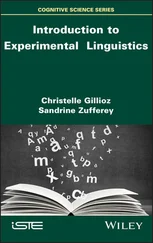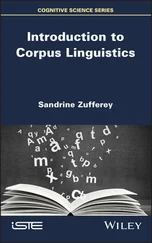insufficiency of children’s linguistic experience to account for the
characteristics of their mature grammars is provided by ambiguity.
Consider again the examples in exercise 4 and, supposing that you
18
linguistics
have succeeded in identifying their ambiguous interpretations, try
to conceptualise what it would mean for your linguistic experience
to have been sufficient to account for this knowledge. What conclu-
sions do you draw from these efforts?
6.
Two of the sentences below are globally ambiguous, i.e. they have more
than one interpretation. The other is a garden-path sentence, which is
temporarily ambiguous, but, in fact, has just one interpretation.
Identify the garden-path sentence and describe what might cause
the garden-path effect. For the globally ambiguous sentences, identify
your preferred interpretation, i.e. the first one that comes to your mind.
Then, taking account of the additional interpretations the sentences
may have, describe the strategy that may have led you to your pre-
ferred interpretation.
(a) Someone shot the servant of the actress who was on the balcony
(b) I put the book that you were reading in the library into my
briefcase
(c) Mary painted the chair in the kitchen
7.
In a brain-imaging study, Kim, Relkin, Lee and Hirsch (1997) examined two groups of bilinguals (group 1 had learned their second
language as children, group 2 as adults). The study showed that both
groups used the same part of Wernicke’s area in their two languages.
However, while group 1 used the same part of Broca’s area for L1 and
L2 processing, group 2 used a part of Broca’s area next to the L1
processing area when processing their L2. What does this finding tell
us about the development of language areas in the brain?
8.
Analyse the following utterances produced by Ruth, a ten-year-old
with language problems (from Chiat 2000). How do her sentences differ from those of normal adult speakers?
Ruth’s utterances
Reconstruction of targets
(a) Me borrow mum camera
I’ll borrow mum’s camera
(b) I ring you last time
I rang you last time
(c) We walk up
We walked up
(d) You and me getting married You and me are getting married
(e) Us going on Friday
We are going on Friday
9.
One of the foundational studies in sociolinguistics which investigated
language variation and change was carried out in the early 1960s by
the American linguist William Labov on the island of Martha’s
Vineyard in Massachusetts, USA. Martha’s Vineyard was (and still
is) a very popular summer holiday destination for (particularly
wealthy) Americans and many bought summer homes there. During
Introduction
19
the holiday period, the tourist population totally swamped the num-
bers of resident islanders – in 1960, for example, there were just over
5,000 islanders, and over 40,000 ‘summer people’. Especially loyal to
the island’s traditional ways were the fishermen from Chilmark in the
rural west, who were clinging on to their maritime livelihoods in
the face of pressure to sell up to outsiders. The more urbanised east of
the island was already the summer home to many of the visitors.
Figure 3a Centralisation and age on Martha ’s Vineyard (from Labov 1972: 22).
Reprinted with permission of the University of Pennsylvania Press.
120
100
80
60
on - the higher the score,
40
the greater the centralisation
20
0
Use of centralisati
Eastern urban Martha's
Western rural Martha's
Chilmark
Vineyard
Vineyard Location on Island
/ai/
/au/
Figure 3b Location and centralisation on Martha’s Vineyard (based on Labov
1972: 25). Reprinted with permission of the University of Pennsylvania Press.
20
linguistics
120
100
80
60
40
the greater the centralisation
20
Use of centralisation – the higher the score,
0
People who intend to leave the Island
People who intend to stay on the island
/ai/
/au/
Figure 3c Leavers and stayers on Martha’s Vineyard (from Labov 1972: 32).
Reprinted with permission of the University of Pennsylvania Press.
Labov investigated the way that many people on Martha’s Vineyard
pronounced the /ai/ and /au/ sounds in words like RIGHT and MOUTH
respectively – see sections 2 and 3 for the notation used here. On Martha’s Vineyard, many people pronounced these words with rather traditional
centralised vowels rather than with the more open vowels that you’d
expect from more standardised accents of North American English.
Figures 3a, b and c (derived from data in Labov 1972), show the results of Labov’s analysis of the conversational speech of Martha’s Vineyarders.
How would you account for Labov’s findings in each of the three figures?
10.
Others, as well as Labov, who have conducted apparent-time studies
have demonstrated the success of their techniques by returning to the
communities they had earlier studied and repeating their research to see
if a real-time diachronic study supported their apparent-time findings.
One such follow-up study, by Meredith Josey, was a repeat of the
Martha’s Vineyard survey, forty years after the original research.
Summer visitors (88,000 in 1995) continue to vastly outnumber
the local population (14,000). The initially strong and resilient local
fishing industry has largely been swallowed up by large conglomerates,
and the fishermen have had to join these large corporations, change
career or diversify. Josey specifically analysed the locality of Chilmark,
the place where Labov had found the greatest degree of centralisation
back in the 1960s, and found that the levels of centralisation of /ai/ had
dropped, from a score of 100 in 1962 to a score of 78 in 2003. Why do
you think levels of centralisation may have dropped?
Further reading and references
Chomsky’s ideas on the nature of language and linguistic enquiry have been
developed in a number of non-technical publications since first being clearly formulated in chapter 1 of Chomsky (1965). These include Chomsky (1966,
1972, 1975, 1980, 1986, 1988, 1995a, 2002). Despite being non-technical, all of these works are difficult for the beginner. A comprehensive and approachable account, locating Chomsky’s approach within a biological framework, is Pinker (1995). Smith (1999) is an excellent attempt to provide an overview of Chomsky’s linguistic, philosophical, psychological and political ideas. A well-written introduction, paying particular attention to such issues as innateness and
species-specificity is Aitchison (1998), and an intriguing, but difficult, debate of these issues is conducted in Hauser, Chomsky and Fitch (2002) and Pinker and Jackendoff (2005).
For language acquisition, a wide-ranging survey of traditional and modern
studies is Ingram (1989), but an introduction which is closer to the emphases we adopt in this book is Goodluck (1991). Atkinson (1992) is narrower in scope and much more technical. O’Grady (1997) and Guasti (2002) are more recent (but technical) introductions. Leonard (1998) provides a comprehensive and readable introduction to Specific Language Impairment.
Garman (1990) is a good overview of psycholinguistics and also contains a discussion of language disorders. For more detailed discussions of the topics we pursue, Harley (2001) is a good source for psycholinguistics and Field (2004) is a comprehensive survey of the major concepts, terms and theories in this area. Field (2003) is a good recent overview of psycholinguistics and also contains some material on neurolinguistics. Caplan (1992) is a good source for language disorders and neurolinguistics and more recent detailed introductions to this field are Ahlsén (2006) and Ingram (2007). The view that the language system might constitute an independent ‘module’ of the mind is a theme throughout much of Chomsky’s writing mentioned above and is defended from a slightly different
Читать дальше
![Andrew Radford Linguistics An Introduction [Second Edition] обложка книги](/books/397851/andrew-radford-linguistics-an-introduction-second-cover.webp)











